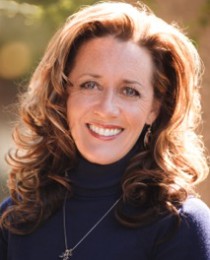Colorado’s preferred-energy policies cruel to ratepayers

By Amy Oliver Cooke
“Giving society cheap, abundant energy would be the equivalent of giving an idiot child a machine gun,” wrote environmental doomsday prophet Dr. Paul Ehrlich in 1975.
That’s a cruel statement directed at people who simply want electric lights so their children can read at night, a refrigerator to keep food from spoiling or a heater to keep their homes warm during the winter.
Yet it seems to be the approach of Colorado’s environmental Left. Part of the problem is progressive leaders’ extremely narrow definition of “clean” energy that limits resource choices to more costly and unreliable wind and solar.
In 2004, Colorado voters approved Amendment 37, requiring Xcel Energy and other investor-owned utilities to use preferred sources such as wind and solar for 10 percent of the electricity sold to end users.
Since then, the Colorado Legislature has mandated increases in the renewable (or preferred) energy standard, from 10 to 20 to the current 30 percent by 2020. Only Maine (40 percent by 2017) and California (33 percent by 2020) have more aggressive mandates. They also have higher electric rates than Colorado.
Last year, the state Legislature passed SB 252, a 20 percent preferred energy standard on Colorado’s rural electric cooperatives. Now nearly the entire state must pay for a significant percentage of electricity produced predominantly from preferred “clean” sources, wind and solar.
Since producing electricity from wind and solar is more expensive, Colorado’s electric rates have gone up along with the Legislature’s mandates.
Not too long ago, our state enjoyed some of the cheapest electricity in the United States. In 2000, Colorado’s residential rates were 7.31 cents per kilowatt hour, equivalent to 9.89 cents in 2013 dollars. Instead, Coloradans now pay 11.91 cents per kilowatt hour for residential electricity, the highest rate in the Mountain West. California, Alaska and Hawaii are the only Western states with higher residential rates.
Colorado’s electric rates are rising significantly faster than in most states. Last year, rates across the United States increased on average 2.4 percent, compared to a 4.5 percent jump here.
These high rates couldn’t come at a worse time. Just this week, The Denver Post reported that Colorado’s labor participation rate has fallen 6 percentage points since 2006, to its lowest level (67.3 percent) since 1976.
In addition, the number of Coloradans obtaining assistance from food stamps continues to mark all-time high numbers, Complete Colorado reports.
The second week of February saw a 42 percent increase in Coloradans asking government for help paying their heating bills, according to 9News.
The state Legislature had an opportunity to modestly improve the situation. Rep. Lori Saine, R-Dacono, introduced HB 1138 that would have expanded the definition of “clean” energy to include hydroelectricity.
Under HB 1138, many electric co-ops that serve Colorado’s rural communities could have met or at least come close to meeting SB 252’s increased mandate. Without the expanded definition, some co-ops will need to build additional capacity and expensive transmission lines, or purchase renewable energy credits from other providers. Some of Colorado’s poorest counties will bear the costs.
Despite HB 1138’s bipartisan sponsorship, lobbying from the wind and solar industries and their advocates in the environmental nonprofit world doomed the bill in committee.
Progressive state lawmakers’ definition of clean energy also is unique. Many states, including those in the eco-friendly Pacific Northwest, the Center for American Progress, the Environmental Protection Agency and our own Colorado Energy Office all consider hydro to be a clean, renewable source.
Our state’s extremely narrow definition of clean energy begs the question of whether progressive lawmakers simply seek to protect the wind and solar industry at the expense of ratepayers.
A 2012 Independence Institute study showed Xcel Energy ratepayers spent $343 million to comply with the preferred energy mandate, much of which ended up as surplus because supply exceeded demand. That’s $245 per ratepayer — nearly two months of average Colorado electricity bills — for electricity they didn’t use.
Affordable power is not mutually exclusive of clean power. Colorado should expand the definition of clean resources to include clean coal, natural gas, hydroelectric and nuclear. We also should encourage a least-cost principle and let consumers decide.
Anything else is just cruel.
Amy Oliver Cooke is the executive vice president and director of the Energy Policy Center at the Independence Institute, a free market think tank in Denver. She can be reached at amy@i2i.org.

No comments:
Post a Comment